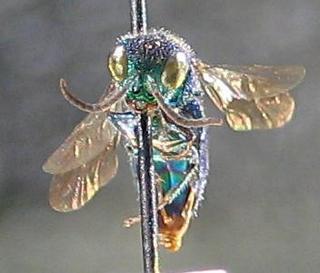
Native Bee Inventory and Monitoring Lab; Photographer: Erika Tucker · 1
Caenochrysis carinata, face |
|
80x5 -
240x3 -
240x4 -
320x1 -
320x2 -
320x3 -
640x1 -
640x2
Set display option above.
Click on
images to enlarge. |
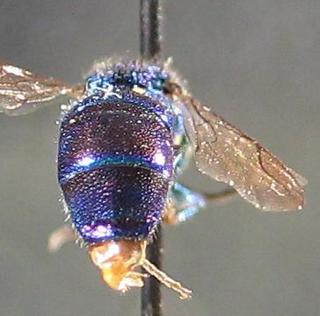
Native Bee Inventory and Monitoring Lab; Photographer: Erika Tucker · 1
Caenochrysis carinata, tail |
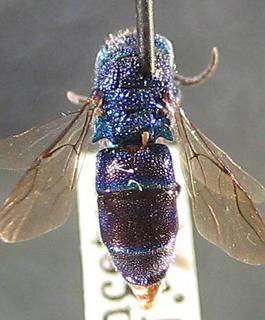
Native Bee Inventory and Monitoring Lab; Photographer: Erika Tucker · 1
Caenochrysis carinata, top view |
|
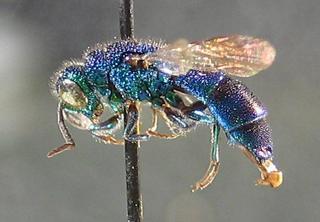
Native Bee Inventory and Monitoring Lab; Photographer: Erika Tucker · 1
Caenochrysis carinata |
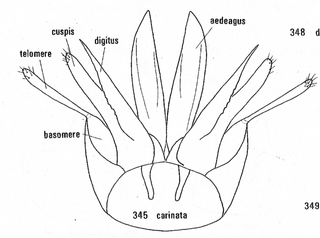
R. M. Bohart and L. S. Kimsey, 1982 · 1
Caenochrysis carinata, male genitalia |
|
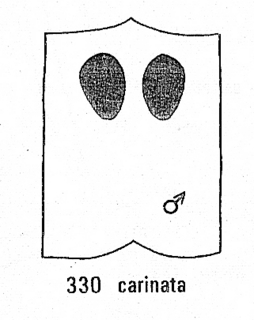
R. M. Bohart and L. S. Kimsey, 1982 · 1
Caenochrysis carinata, S2 |
|
Overview |
Taken from:
R. M. Bohart and L. S. Kimsey. 1982. A Synopsis of the Chrysididae in America North of Mexico.
Trichrysis (Caenochrysis) carinata (Say)
(Figs. 330, 345)
Chrysis carinata Say 1828:82. Type sex unknown, Indiana (lost).
Discussion: Closely resembling both tridens and mucronata, carina a can be readily distinguished by the conformation of the spots on S-II (fig. 330). In carinata these spots are separated by less than half their width in males and are almost contiguous in females. Additionally males are extensively marked with dark purple on the dorsum, with the vertex darker than the rest of the head, and the medial ridge of the pit row is nearly straight.
Hosts: Trypargilum c. collinum (Smith), T. c. rubrocinctum (Packard), T. clavatum (Say), T. striatum (Provancher) (Krombein 1967).
Material examined: 98 males, 180 females.
Distribution: east of the 100th meridian as far north as New York and as far south as Tamaulipas, Mexico. Collection dates are May through September.
Trichrysis (Caenochrysis) Kimsey and Bohart
Caenochrysis Kimsey and Bohart 1981:76. Subgenerotype: Pyria tridens Lepeletier 1825, original designation.
Diagnosis: T-III apex tridentate to medially pointed, discoidal cell complete, paramere with definitive telomere.
Discussion: Five species are known in the Nearctic Subregion. Many others are neotropical.
|
|
| Supported by | |
Updated: 2024-04-24 00:23:34 gmt
|